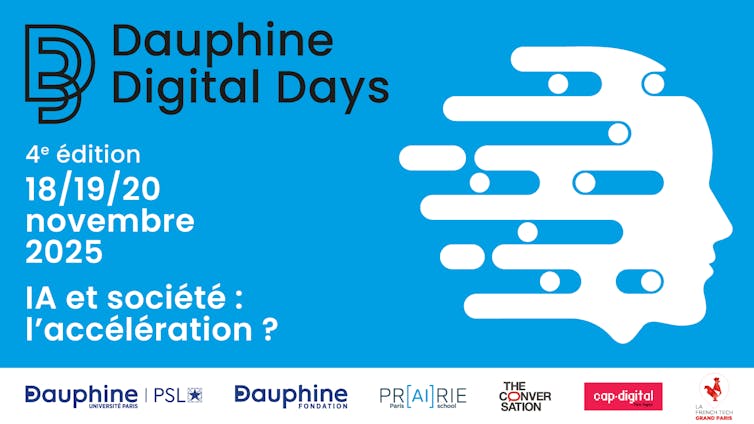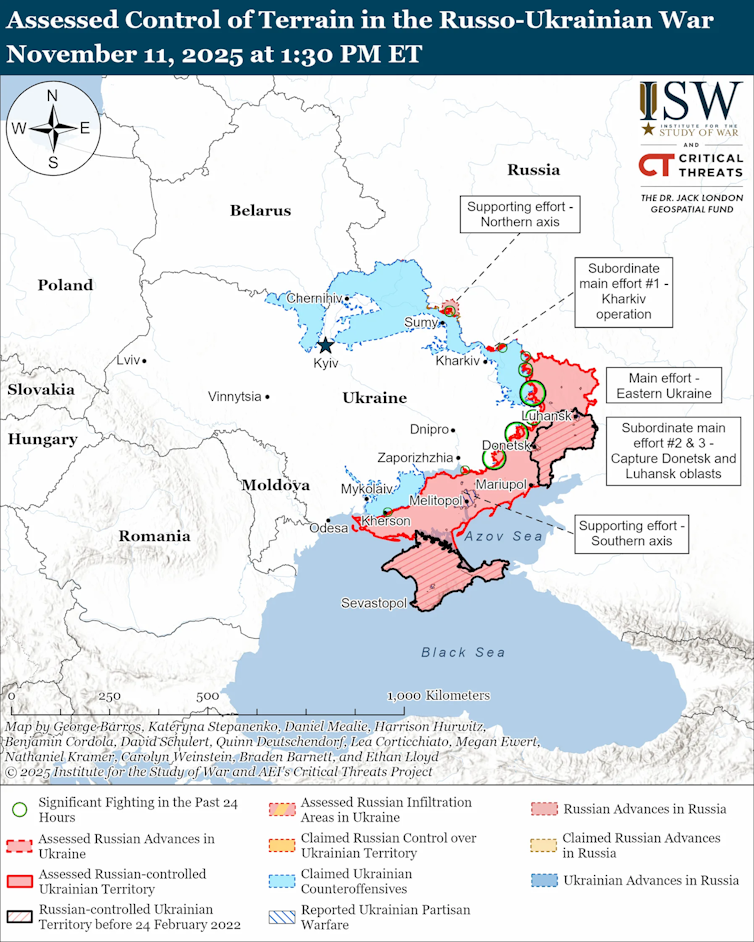Source: The Conversation – UK – By Sanam Mahoozi, Research associate, City St George’s, University of London
Iran is facing its most severe water crisis in more than six decades.
Major dams supplying drinking water to provinces with millions of residents are nearly empty, and groundwater reserves have been depleted. Many cities have endured an entire autumn without a single drop of rain.
In the capital, Tehran, and in Mashhad, the country’s second-largest city, in the north-east, some reservoirs are at less than 5% and 3% capacity, respectively.
Authorities have begun cutting off water at night in the capital, according to reports. Iran’s president Masoud Pezeshkian has even warned of possible evacuations if “it doesn’t rain soon”. Images have surfaced on social media showing university students protesting water shortages on campuses.
Water shortages pose a serious security risk in Iran. In the summer of 2021, protests broke out in Khuzestan province in the south-west of the country due to severe water shortages. A few months later, farmers in Isfahan gathered to demonstrate over the Zayandeh-Rud River drying up.
Today in Shiraz (home to iconic cultural landmarks such as Persepolis) as well as the historic cities of Isfahan and Yazd, land subsidence is cracking buildings, collapsing roads and threatening monuments as excessive groundwater extraction weakens the soil beneath them.
More than 90% of Iran’s water is extracted for farming, with much of it lost to inefficient irrigation practices. Studies show the country’s ambitious dam-building campaign, intended to enhance food and energy self-sufficiency, has disrupted natural ecosystems and contributed to the drying up of major wetlands and lakes. These include Lake Urmia, once the Middle East’s largest salt lake, now reduced to a bed of salt that could fuel dust and salt storms across the region.
While climate change has contributed to the worsening drought, Iran’s water crisis has mainly been caused by poor management. The government’s focus on agricultural expansion and dam construction has often come at the expense of sustainability, while limited regulation of groundwater extraction including widespread drilling of around one million wells, half of which are illegal, has severely depleted aquifers across the country.
Iran’s foreign policy and isolation from the international community are also key drivers of its water crisis. Sanctions have meant that Iran has limited access to new technologies. These include advanced irrigation systems, high-resolution satellite monitoring such as InSAR data (which can detect land subsidence), cloud-based AI platforms for detailed urban or infrastructure-level monitoring, smart sensors, and precision agriculture tools.
The absence of such technologies has deepened inefficiencies, accelerated land subsidence and exacerbated the depletion of vital water resources across the country. Foreign investors are also hesitant to fund projects in Iran because of sanctions, further blocking opportunities for innovation.
Iran’s divided decision-making system has made the problem worse. The ministry of energy, the ministry of agriculture and the department of environment often operate with different priorities. One builds infrastructure for hydropower, another pushes for farmland expansion, while the environmental office doesn’t have enough resources and power to make major changes. These conflicting agendas have created confusion, inefficiency and widespread overuse of water.
But Iran’s water crisis goes beyond its borders. For instance, the country shares bodies of water with Afghanistan and Iraq. Disputes over water, such as the long-running disagreement with the Taliban over the Helmand River, have already increased tensions.
As lakes and rivers dry up, their exposed beds could turn into vast sources of sand and dust. These particles can travel thousands of kilometres, crossing national borders and degrading soil and air quality across the wider region.
What begins as a local water crisis in Iran then has the potential to become a transboundary environmental threat, affecting millions beyond its border, from Sistan and Baluchistan and Khuzestan to neighbouring countries downwind.
Can anything be done?
Scientists, academics, and the media have discussed the causes and consequences of Iran’s water crisis for a long time. What’s talked about far less, however, are the potential solutions – and whether anything can actually be done to address parts of the crisis and answer the question on the minds of more than 80 million people: Is there still hope?
The short answer is yes.
Assuming the country gains access to modern technology and finance through changes to its foreign policy (which means for instance that sanctions are removed), this could turn the tide. In the short term, the priority must be halting groundwater depletion through strict monitoring, smart meters on wells, and integrating satellite data with on-the-ground measurements.
Real-time water accounting – using tools such as space satellites Grace and Sentinel – can identify critical areas and guide emergency action. The government must also inspect areas affected by subsidence or over-extraction. This might include schools, which have suffered lots of problems with subsidence historically, causing cracked walls and other damage. Then it must take immediate action, including temporary closures or relocations where safety is at risk.
Mid-term priorities should focus on improving monitoring and efficiency. Managed aquifer recharge (a strategy that deliberately directs water into underground reservoirs) using stormwater or treated wastewater, precision irrigation, digital agriculture, and AI-based irrigation scheduling can dramatically reduce losses of water
AI and digital twin technologies (digital replicas of environments) have proved to be highly effective in sustainable natural resource management.
An example of this is how the €10 million (£8.8 million) EU-funded AI4SoilHealth flagship project leverages AI and big data analytics to monitor and quantify soil health across Europe. Managing water resources is no exception. Integrating AI-driven models and using new digital tools can enhance forecasting, optimise usage, and help inform policy decisions.
Long-term recovery also depends on governance. Iran needs a unified national water authority that aligns energy, agriculture, and environmental goals around sustainability.
Legal caps on groundwater abstraction, and economic diversification away from water-intensive crops are essential. Incentivising efficient irrigation and wastewater reuse plus adjusting water pricing to reflect scarcity would help.
The country must diversify its economy so that fewer livelihoods depend on water-intensive industries, such as farming. Together, these steps could stabilise Iran’s water systems and prevent further environmental, social, and economic damage.
Iran’s environmental crisis is human-made and so is the solution. With these changes, the country could secure its water systems, and give its public more security.
![]()
Nima Shokri receives funding from European Commission for the AI4SoilHealth project.
Sanam Mahoozi does not work for, consult, own shares in or receive funding from any company or organisation that would benefit from this article, and has disclosed no relevant affiliations beyond their academic appointment.
– ref. Iran’s capital faces unprecedented water shortages and even possible evacuation. What changes could help? – https://theconversation.com/irans-capital-faces-unprecedented-water-shortages-and-even-possible-evacuation-what-changes-could-help-269637





